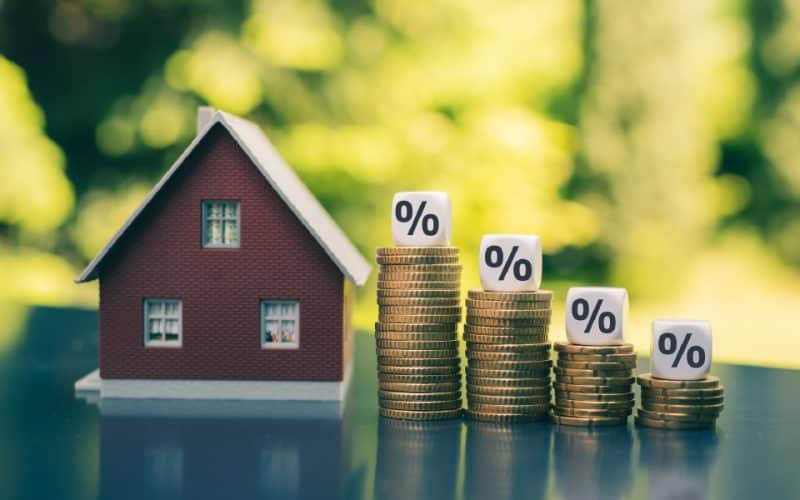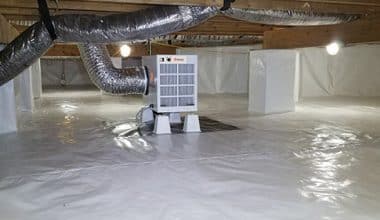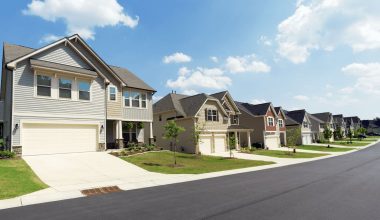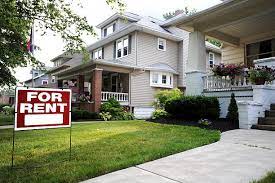The cap rate is a critical property measure for commercial real estate investors. The cap rate can be used to analyze properties and find a good deal. In this post, I’ll define a cap rate (also known as a capitalization rate). I’ll also show you how to utilize the cap rate formula to examine real estate markets and rental properties in a very practical way.
What is Capitalization Rate (Cap Rate)?
The capitalization rate (or Cap Rate for short) is a term used in real estate to describe the rate of return on a property based on the net operating income (NOI) generated by the property. In other words, the capitalization rate is a return metric used to calculate the prospective return on investment or capital payback.
What Is a Good Cap Rate When Investing in Real Estate?
What is a good cap rate? The quick answer is that it depends on how the capitalization rate is used. For example, if you are selling a property, a lower cap rate is good since it increases the value of your property. A higher cap rate, on the other hand, is good if you are buying a property because it means your initial investment will be reduced.
You may also be looking for a market-based cap rate based on recent sales of comparable homes. A good cap rate in this scenario is determined by comparing similar properties in the same location. Assume you wish to determine the value of an office property based on a market-derived capitalization rate. A good cap rate in this scenario is one determined from recent office building sales in the same market. A terrible cap rate would be determined by various property types in various markets.
Cap Rate Formula
The Cap Rate formula is equal to Net Operating Income (NOI) divided by the asset’s current market value.
Net Operating Income/current market value of an asset = capitalization rate
Cap Rate Formula
Where:
Net operating income is the annual income generated by the property after deducting all running expenses, such as property management and tax payments.
The current market value of an asset is the market value of an asset.
How to Calculate the Cap Rate
A property’s cap rate is defined by its potential revenue and risk level in comparison to other properties. It is important to note that the capitalization rate will not provide a whole return on investment. It will instead provide an estimate of how long it will take to recoup the initial investment in the property.
To use this statistic successfully, you must first understand how to calculate the cap rate. The cap rate can be calculated by dividing net operating income (NOI) by the property’s current market value.
Let’s go over an example of this calculation to better understand this cap rate formula.
#1. Calculate the Net Operating Income of the Property
First and foremost, you must learn how to calculate net operating income (NOI). The NOI is the sum of the property’s income streams less the sum of the property’s expenses.
To calculate the property’s income streams, including any type of money that it can generate, such as rental income, fees, and onsite facilities that require additional payments. Assume you’re evaluating a property that generates $5,000 per month in rental income but has no other sources of income.
The expenses for the property will then be totaled. Property taxes, insurance premiums, repairs, and legal fees are obvious items to mention. However, there are some less visible costs to consider, such as prospective vacancies. Most investors assume a 10% vacancy rate, but you can conduct some research in your area to get an exact assessment of the property’s expected vacancy rate. The total monthly expenses for the property you are considering are $1,000, which includes a 10% vacancy forecast.
After determining the property’s income and expenses, deduct the costs from the income. The NOI will be determined at that point. In our scenario, the property’s net operating income is $4,000 each month, or $48,000 per year.
#2. Subtract the current market value from the total.
The net operating income is then divided by the current market value. Although investors disagree on whether the current market value or the purchase price should be utilized, the majority of investors use the current market value of the property.
Keeping this in mind, we’ll use the more widely acknowledged cap rate formula and divide net operating income by current market value. Check out the property information and one of the various home valuation estimator tools available to determine the property’s current market value.
In this case, the property’s current market worth is $480,000. With that, we can divide $48,000, yielding 0.10.
#3. Calculate as a Percentage
The final step is to convert your division product into a percentage. This is accomplished by multiplying the result by 100.
In this situation, we may simply multiply 0.10 by 100 to obtain a cap rate of 10%. The cap rate is indicated as a percentage.
Cap Rate Influencing Factors
The cap rate influences your investing decision. However, it is critical to understand that the cap rate is affected by a variety of circumstances. Among the factors to examine are the market, location, and property type.
Here are a few of the variables that can have an impact on cap rates:
- Location: As with everything in real estate, the property’s location can have a significant impact on cap rates. A higher capitalization rate is sometimes associated with a riskier area.
- Market size: A large, competitive market may have lower cap rates than a smaller, riskier market.
- Asset stability: The expected stability of the property value may be considered.
- Growth potential: A property with a lot of promise in a growing market may see its cap rate influenced.
- Capital liquidity: The amount of capital invested in the property has a significant impact on the cap rate because it directly affects the NOI.
Of course, these are not the only variables that can influence cap rates. However, these may have the most impact.
Capitalization Rate Importance
The capitalization rate is used to compare various investment options. For example, if all else is equal, an investor is more inclined to focus on a property with a 10% cap rate vs another property with a 3% cap rate.
The rate also illustrates how long it takes to recoup a property investment. For example, if a property has a 10% cap, it will take the investor 10 years to return his investment (this is referred to as “completely capitalized”).
Although it is an important indicator in analyzing investment prospects, investors should never buy a property solely based on its cap rate. It is important to realize that different cap rates signify varying levels of risk—a low capitalization rate indicates reduced risk, whereas a high capitalization rate indicates higher risk. As a result, there is no “ideal” cap rate; it is determined by the investor’s risk tolerance.
Analyzing Two Different Properties Using Cap Rates
Assume you decide to purchase a small apartment building. You and a business partner have saved some money that you want to spend as a down payment. A mortgage loan will be used to cover the remainder of the purchase price.
Your local real estate agent searches for houses using traditional methods such as the MLS (multiple listing service), Loopnet.com, and networking.
She presents you with two separate acquisition options after a few weeks of searching.
Property #1 — Consistent Income Producer with a 6.48 percent Cap Rate
The first property is a ten-unit building for sale for $1,000,000. Your agent classifies it as a B property. It is totally rented, requires no major repairs, and is managed by a good firm. Long-term demographic and economic growth prospects are also good in the area.
Here are the figures:
Total monthly rent is $9,000 ($900/unit).
- Monthly operating costs = $3600
- Monthly net operating income = $5,400
- annual net operating income =5,400 x 12 months = $64,800
- Cap rate = 6.48 percent ($64,800 /$1,000,000)
You like this offer because it generates a good income and has promising long-term possibilities. It also lacks any major “gotchas” or moving pieces. You can simply purchase it and begin earning money right away by employing a third-party manager.
Property #2 – 6.35 percent cap rate, but potential for value addition
The second property is a 15-unit building for sale at $850,000. Your agent rates it as a C-class property, but the neighborhood is growing, with B and even A-class properties nearby. Other investors are refurbishing and raising rents on their buildings. As a result, there is an opportunity to create value while potentially earning a higher return.
The following are the purchase numbers:
- Total monthly rent = $7,500 ($500/unit).
- Monthly operational expenses = $3,000
- Monthly net operational income = $4,500
- Annual net operational income = $54,000 ($4,500 x 12 months)
- Cap rate = 6.35 percent ($54,000/ $850,000)
However, keep in mind that there is an opportunity to add value and enhance the financial situation. Your agent and property manager are convinced that you can spend $150,000 ($10,000/unit) and raise the rent on each unit from $500 to $700 per month.
Read Also: ENCUMBRANCE IN REAL ESTATE: DEFINITION & HOW IT WORKS
Here are the new figures as a result of this improvement:
- Total monthly rent = $10,500 ($700/unit).
- Monthly operating costs = $3,500
- Monthly net operational income = $7,000
- $84,000 = annual net operational income ($7,000 x 12 months).
There are two options:
If you sell at a 6% exit cap rate, the new value is $1,400,000 ($84,000 6% = $1,400,000).
The gross net gain in value is $400,000 ($1,400,000 – $1,000,000).
OR continue to rent for an 8.40% cap rate ($84,000 $1,000,000), also known as an unleveraged rental yield.
This second option will necessitate more collaboration. There is also the possibility that the strategy will fail. Before you finish, the local or national economy may experience difficulties. Alternatively, you may not carry out the repairs or rent increases properly.
But if you can address those dangers and put in the effort, the payoff will be far greater. For the same $1 million investment, you get significant growth in value and a significantly greater rate of return on income.
When To Use Capitalization Rates And When Not To
Cap rates are commonly used by real estate investors to compare the risk of purchasing several commercial properties. Although cap rates can be used to guide other real estate investment decisions, they may not be as useful.
If you are contemplating the capitalization rate as a technique to analyze possible properties, keep in mind that there are numerous tools available to assist you. Other indicators can be used to assess the risk and possible returns of an investment property.
Cap rates can be a useful instrument for commercial real estate. However, you should not use this formula to assess the worth of a single-family home, a property with erratic income streams, or a property that you intend to flip right away.
ROI vs. Capitalization Rate
The fundamental distinction between cap rate and ROI is the purpose of the two measurements. As previously stated, the capitalization rate measures the investor’s probable return on investment (ROI). Having said that, it’s easy to see why many entrepreneurs mix the two. The two indicators are extremely similar in that they inform an investor about what to expect if they proceed with an investment. It is important to note, however, that the capitalization rate and the ROI serve different functions when reviewing a deal.
Return on investment is intended to provide investors with an objective proportion of how much they can expect to profit from a transaction. ROI, for example, is commonly represented as a percentage to evaluate an investor’s probable return on investment. Investors can then compare the ROIs of two entirely distinct investments. Furthermore, expressing the return on investment as a percentage makes it easier to compare two specific assets, whether they are the same or not. As a result, investors may compare the ROI of a three-month rehab to a 30-year buy-and-hold.
In contrast, the cap rate is used to compare similar real estate holdings. A cap rate, for example, would be good for comparing returns from two rental properties but would be far from optimal for investors comparing a rental property to rehab.
Is 12% A Reasonable Cap Rate?
Although the range for a good cap rate is between 8% and 12%, the real answer is: It varies. While a 10% cap rate may be respectable for some rentals, there are other considerations to weigh before committing to an Airbnb investment.
Does the Cap Rate Correspond to ROI?
ROI and cap rate are not the same. The ROI is the return on your cash investment, not the market value, whereas the cap rate is the anticipated return based on the value of the property.
Why Is Riskier with a Higher Cap Rate?
Let’s be clear, though, before you start crunching statistics and making plans for your real estate empire: cap rates are tied to risk. In general, the riskier the investment, the greater the cap rate. In other words, a low asset price and a high cap rate often indicate a riskier investment.
Lower Value Inferred from a Higher Cap Rate?
Therefore, if NOI is equal, a higher cap rate will lead to a lower property value. The subject property’s worth will undoubtedly be overestimated if a cap rate that is too high is applied to it, and vice versa.
What Does “Cap Rate” Mean Exactly?
A metric of real estate valuation used to evaluate various real estate investments is the capitalization rate (or “cap rate”). The cap rate is typically determined as the ratio of the annual rental revenue generated by a real estate asset to its current market value, however, there are various variations.
Conclusion
A cap rate formula is an effective tool for comparing commercial and multi-family buildings. However, the cap rate is not the only measure to consider as you research real estate investing opportunities.
Because every investor’s circumstances are unique, a good cap rate should not be your only green signal. Before making an investment decision, there are other variables to consider. For example, your cash flow picture may differ significantly from that of another investor on the same property. What is a beneficial asset for one investor may become a liability for you.
As you continue your search for the ideal investment property, do your homework on the best practices for purchasing an investment property. Investing in real estate may be a lucrative business if you take the time to educate yourself.
Cap Rate FAQs
What does 7.5% cap rate mean?
A 7.5 cap rate means that you can expect an annual gross income of 7.5 percent on the value of your property or investment. If your property is worth $150,000, a cap rate of 7.5 means a yearly return of $11,250.
Why is cap rate important in real estate?
The capitalization rate is primarily used to differentiate between different investment opportunities. An investor is more likely to focus on the property if a securities investment delivers a projected 4% return and the property has an 8% capitalization rate.
Why are cap rates so low?
Cap rates are low in many real estate markets because investor sentiment is positive. In other words, rather than risk their investment capital, people are willing to pay more for NOI in a safe and stable market.






